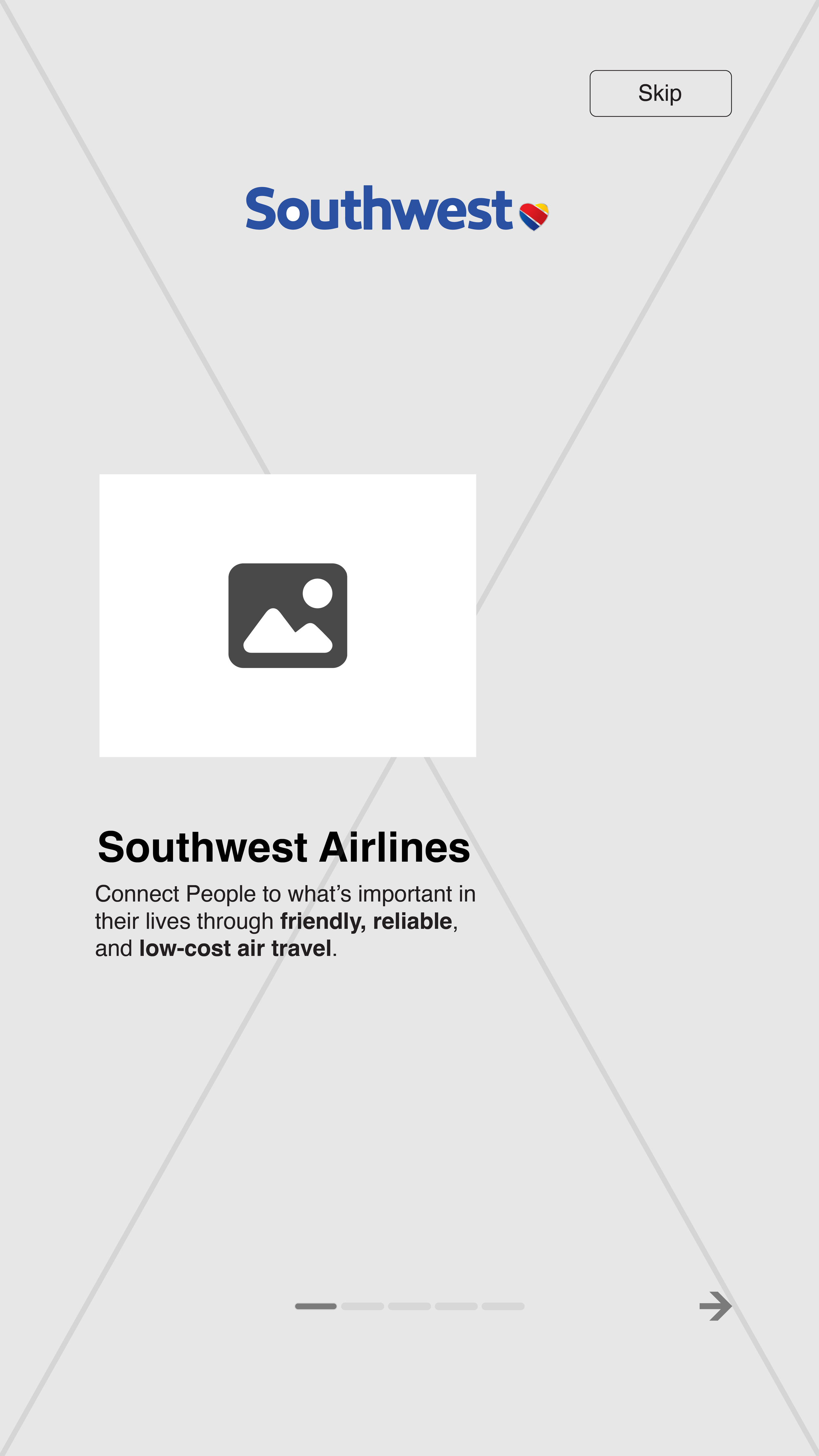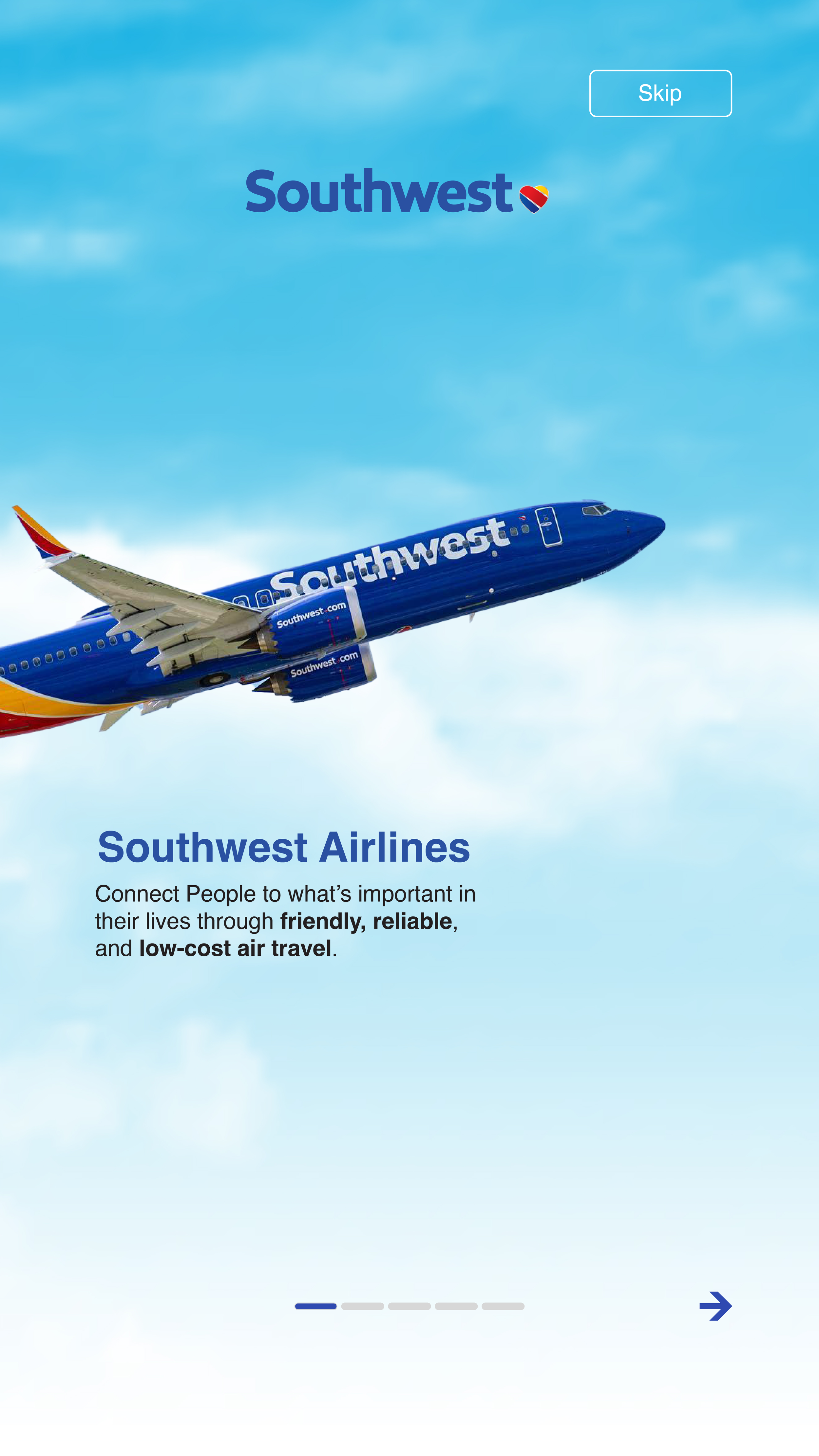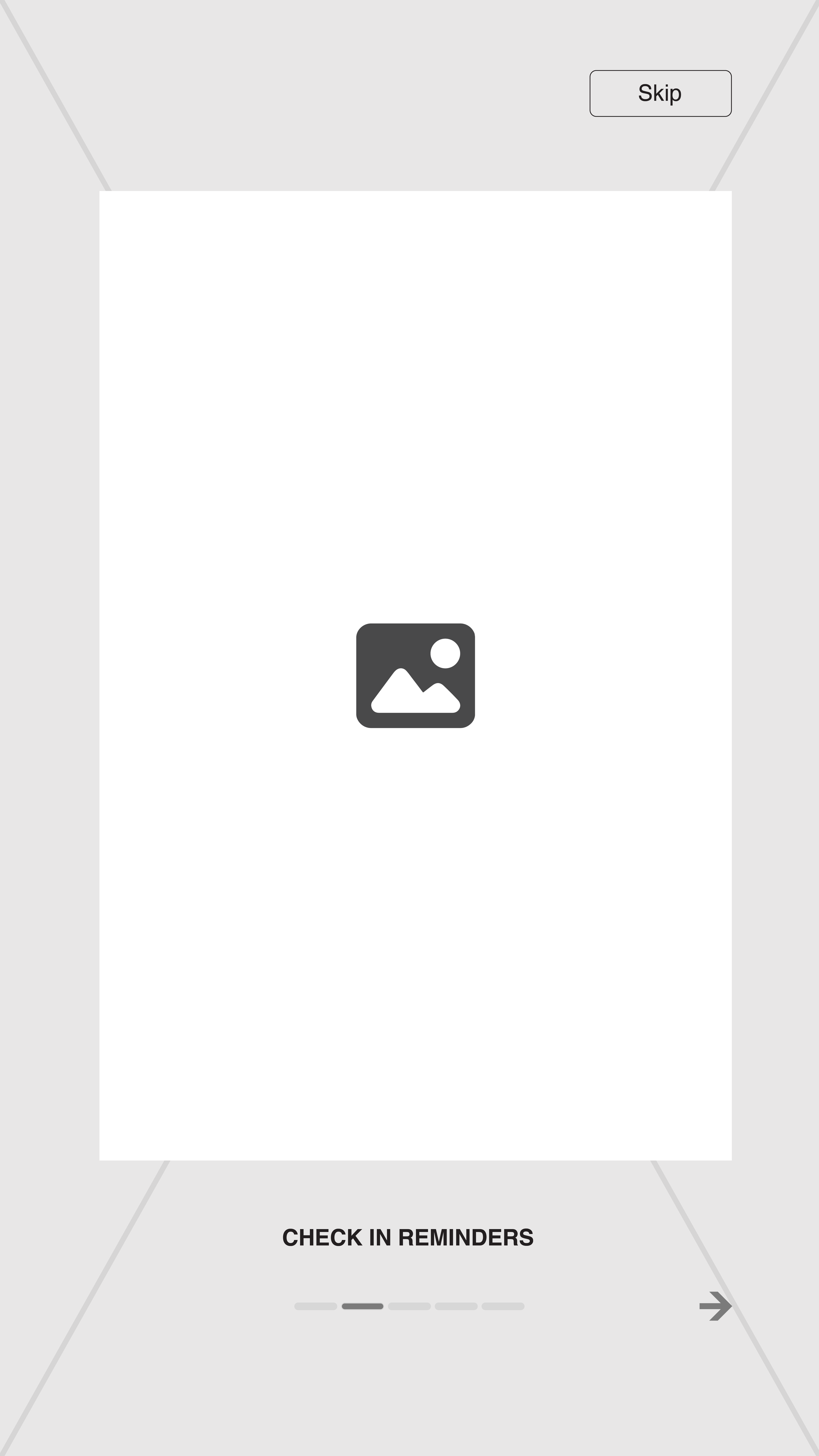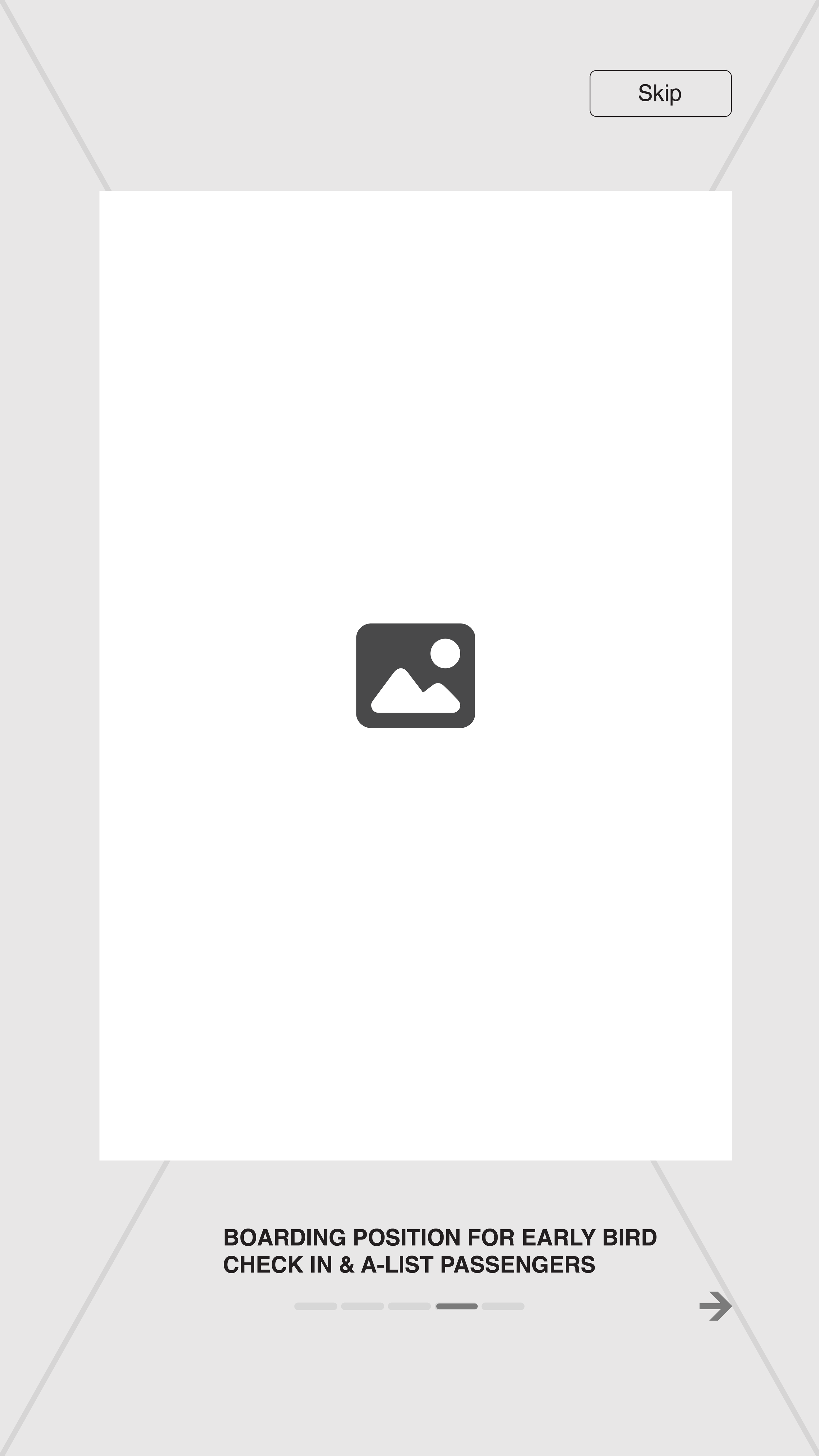Objective
Redesign the app to enhance user engagement, improve usability, and streamline the booking process. Focus on visualizing the app’s advantages, optimizing call-to-action navigation for efficiency, and making the fare comparison section more user-centered to accelerate user decision-making.
“When I first opened the app, I enjoyed the color contrast of the yellow text on a blue background, which made the information stand out. However, the initial window displayed a board with icons
that lacked visual appeal, so I quickly skipped all the introductory windows and went straight to the homepage. I also ignored the ‘view example’ button, assuming I would figure it out later.”
Nancy (female, 26, single, works in a science lab at UIC)
Overview
Southwest Airlines is well known for:
Offering competitive fares
Transparency with no hidden fees
Unique boarding system that has no assigned seat (first-come, first-served)
Primary Research
“When I first opened the app, I enjoyed the color contrast of the yellow text on a blue background, which made the information stand out. However, the initial window displayed a board with icons
that lacked visual appeal, so I quickly skipped all the introductory windows and went straight to the homepage. I also ignored the ‘view example’ button, assuming I would figure it out later.”
Nancy (female, 26, single, works in a science lab at UIC)
Secondary Research
Southwest Airlines is known for offering premium
flight services at affordable prices. According to the ACSI Travel Study (2022-2023), Southwest ranked 3rd in customer satisfaction, demonstrating its ability to meet the needs of travelers. The airline primarily targets families, leisure travelers, and business travelers who rely on frequent, low-cost flights within the U.S. However, as highlighted by Nina Sheridan from Latterly, one of Southwest’s brand objectives in 2023-2023 is to increase its business customer base. Unfortunately, the current app design has not effectively catered to this segment. For instance, the booking process prominently features only the ‘Wanna Get Away’ fare, offering less value to business travelers who need to compare all available fare options at first glance quickly.
Challenge
The primary challenges include a lack of visual appeal and poor user engagement. Additionally, the navigation bar is not optimized for new users, making it time-consuming for them to locate essential features. Lastly, the booking site is ineffective for business travelers as the site does not provide a comprehensive view of available options. This inefficiency contributes to lower user satisfaction, particularly among a demographic that requires quick and easy access to fare comparisons.
Solution
Improve First-time user onboarding
The onboarding process, which currently features text and icons, could be made more engaging by incorporating an image slider. This slider would preview the app’s key advantages and features in detail, providing a more dynamic and visually appealing experience without requiring additional actions from the user. This approach would make the onboarding feel smoother and more informative while maintaining user interest.
Reorganize the navigation bar
Although the “Book Flight” button is one of several navigation options, it is one of the most crucial features of an airline app. Placing the “Book Flight” button in the center would enhance its visibility, giving it more prominence and making it easier for users to find. Additionally, aligning the button with the natural flow
of the eye would improve interface scanning speed.
Optimize the booking flow
The app currently displays only the lowest price, and customers need to navigate to a different page to view all available prices. Additionally, the prices are aligned vertically, which slows down the comparison process. This can be improved by displaying the
full range of prices on the same page with just one click. Furthermore, organizing the prices horizontally would enhance the user’s ability to compare options. As Anthony from UXmovement notes, horizontal arrangement emphasizes the relationship between different actions, encouraging users to consider all options equally. This redesign would optimize the scanning flow.
Design
Design Process
User onboarding
Research
“An effective visual design is fundamental to usability. It organizes information in a way that guides users naturally through the app, reducing frustration and increasing efficiency. Strategic placement of icons, buttons, and other UI elements streamlines navigation, making complex tasks simpler and more enjoyable.”
Wireframe
Design
Booking Browsing
Wireframe
Navigation Bar Update
Design
Key Updates Feature
The booking icon has been strategically centered to create a seamless transition for customers, guiding them effortlessly from flight discovery to booking.
The introduction section now features enhanced illustrations and a visually appealing UI, immediately highlighting the latest updates to the mobile app. For added convenience, users have the option to skip this section entirely, allowing them to access the homepage without delay.
The booking process was streamlined into a single, user-friendly interface, empowering customers to effortlessly compare prices across multiple flights while exploring the detailed benefits of each fare option—all in one place.
Conclusion
This project successfully tackled critical usability challenges, creating a more engaging user experience for the Southwest Airlines app.
By enhancing onboarding, reorganizing navigation, and streamlining the booking process, the redesign not only simplifies user interactions but also caters to diverse customer needs, including leisure and business travelers.
The updates align with the airline’s goals of transparency and customer-centricity, ensuring users can make informed decisions quickly and efficiently. Although this solution marks a significant step toward optimizing the app experience, it remains untested in a live environment. Future iterations will be guided by real-world user feedback and data insights, ensuring continuous improvement and alignment with user expectations.






















